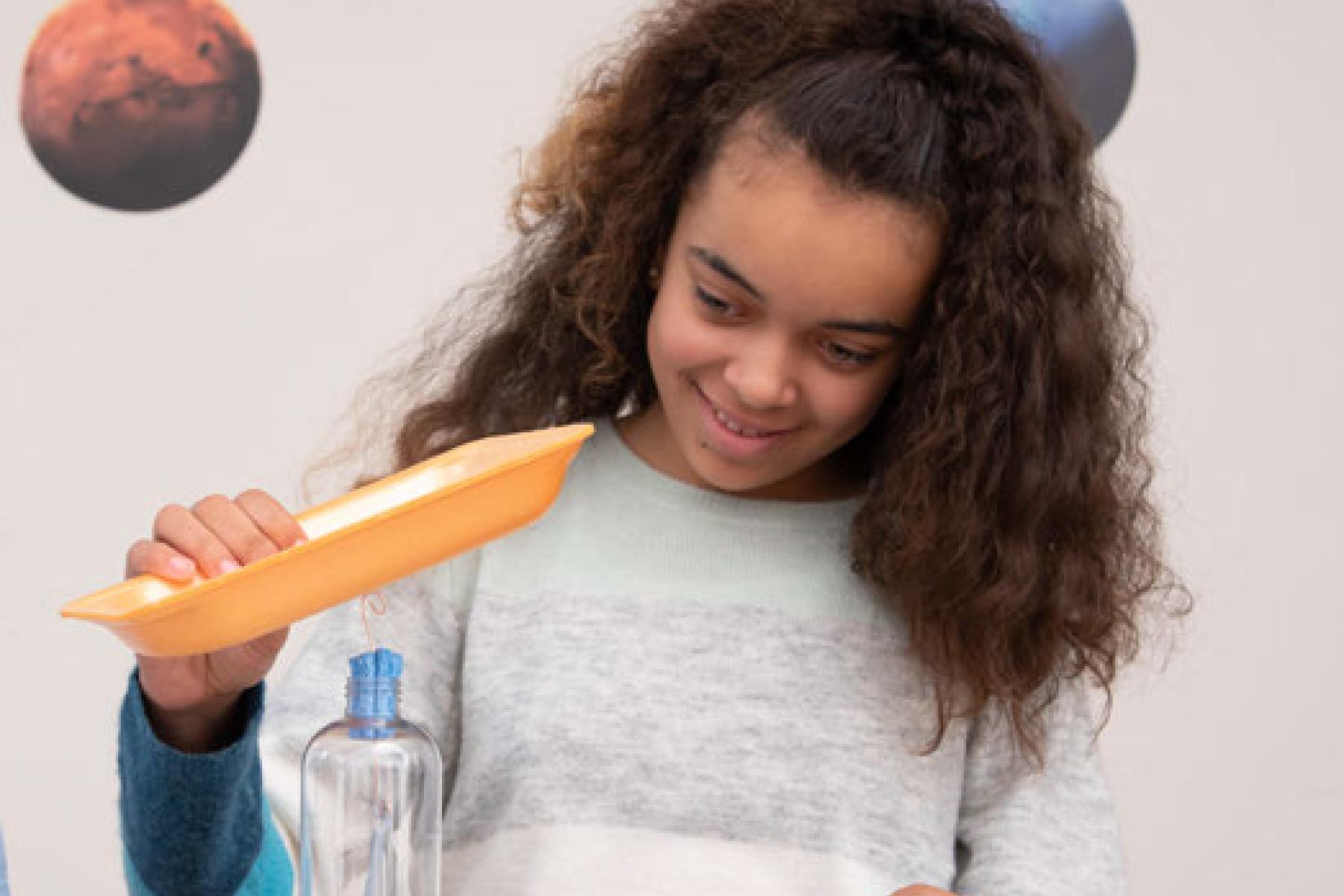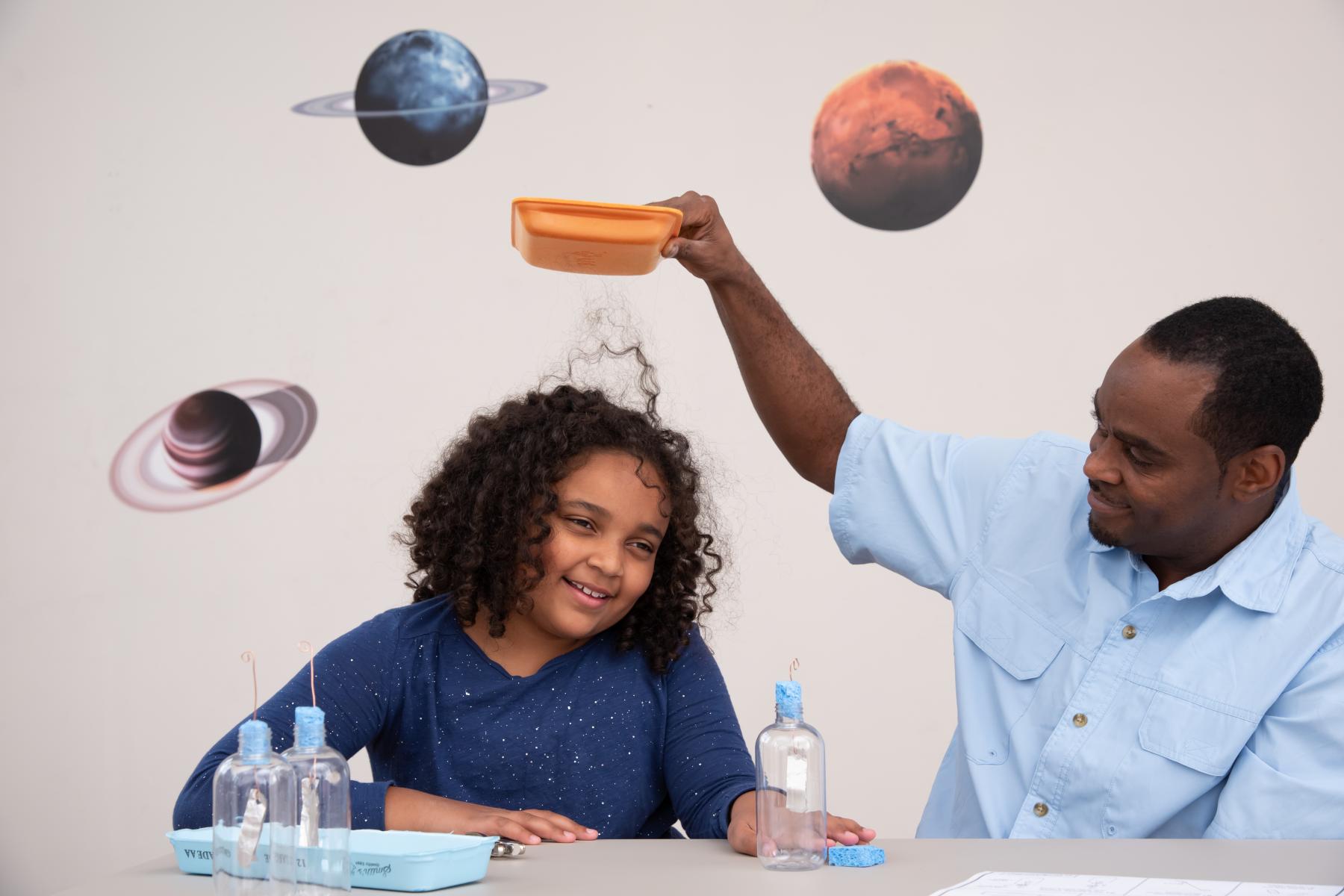DESCRIPTION
This activity encourages visitors to build an electroscope—a simplified version of one of the tools scientists use to study the invisible forces on Earth and in space. Participants will learn how static electricity works, how scientists can use it to study space, and how it sometimes presents challenges to tools and spacecraft.
DESCRIPTION
This activity encourages visitors to build an electroscope—a simplified version of one of the tools scientists use to study the invisible forces on Earth and in space. Participants will learn how static electricity works, how scientists can use it to study space, and how it sometimes presents challenges to tools and spacecraft.
TRAINING VIDEOS
OBJECTIVES
BIG IDEA
Special tools can help detect invisible forces on Earth and in space.
LEARNING GOALS
- Engineers and scientists invent and build tools to answer specific questions.
- Some NASA scientists study how static electricity behaves—here on Earth, in space, and on other worlds.
DOWNLOAD FILES
- Static Electricity facilitator guide (PDF)
- Static Electricity activity guide (PDF)
- Lightning on Other Planets info sheet (PDF)
- Build an Electroscope instructions (PDF)
- Watch Out for Static Electricity info sheet (PDF)
- Static Electricity table sign (PDF)
- Static Electricity activity guide (Spanish) (PDF)
- Watch Out for Static Electricity info sheet (Spanish) (PDF)
- Build an Electroscope instructions (Spanish) (PDF)
- Lightning on Other Planets info sheet (Spanish) (PDF)
- Static Electricity table sign (Spanish) (PDF)
Credits
Museum of Science, Boston
Sciencenter
This material is based on work supported by NASA under cooperative agreement award numbers NNX16AC67A and 80NSSC18M0061. Any opinions, findings, and conclusions or recommendations expressed in this material are those of the author(s) and do not necessarily reflect the view of the National Aeronautics and Space Administration (NASA).
Creative Commons Attribution Non-Commercial Share Alike 3.0 United States (CC BY-NC-SA 3.0 US).
View more details

NISE Network products are developed through an iterative collaborative process that includes scientific review, peer review, and visitor evaluation in accordance with an inclusive audiences approach. Products are designed to be easily edited and adapted for different audiences under a Creative Commons Attribution Non-Commercial Share Alike license. To learn more, visit our Development Process page.




